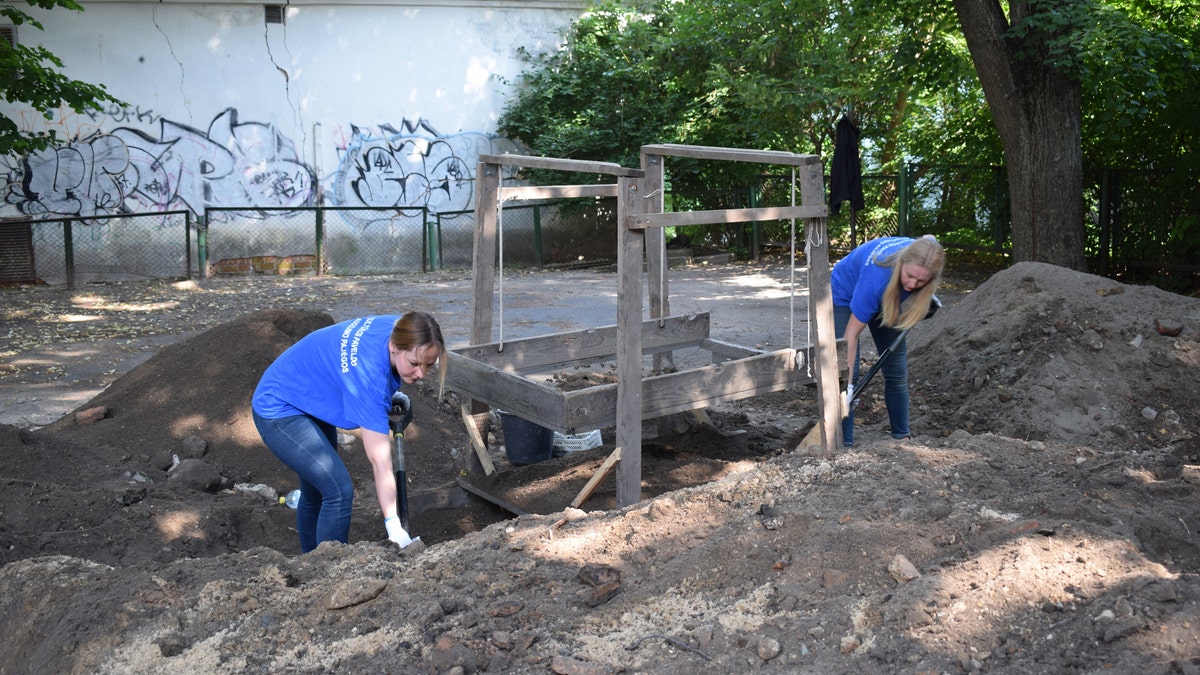
The excavation site (Jon Seligman).
Archaeologists have uncovered two ritual baths in the remains of the Great Synagogue of Vilna (Vilnius), in Lithuania, more than 70 years after its destruction during the Holocaust.
A team of experts from Israel, the U.S. and Lithuania uncovered the baths in the Lithuanian capital last month, the latest discovery at the historic site.
The 17th-century Great Synagogue was at the heart of the Jewish community Vilnius for hundreds of years until its destruction by the Nazis. Prior to the Holocaust, the Great Synagogue was also surrounded by a host of buildings, including other synagogues, a community council, kosher meat stalls, miqva’ot (ritual baths) and the famous Strashun rabbinical library.
RADAR TECHNOLOGY HELPS REDISCOVER THE GREAT SYNAGOGUE OF VILNIUS, 70 YEARS AFTER ITS DESTRUCTION
The site was also home to Rabbi Eliyahu, the celebrated 18th-century Vilna Gaon, or “genius.”

The Great Synagogue compound was looted and burned by German forces in 1941, and the standing remains were later completely destroyed by Soviet authorities in the 1950s. The Soviets later built a school on top of the area in 1964.
In 2015, archaeologists used ground-penetrating radar to locate the remains of the Great Synagogue and the buildings around its ‘Shulhoyf’ or ‘shulof’ community courtyard.
HOLOCAUST ESCAPE TUNNEL FOUND: PRISONERS DUG WITH SPOONS TO ESCAPE NAZIS
“Most of the historical descriptions of the Great Synagogue in Vilna and the community courtyard (the Shulhoyf) relate to the Great Synagogue and the surrounding prayer halls,” explained Dr. Jon Seligman of the Israel Antiquities Authority, who led the research team, in a statement. “Until now, we have found little information about the bathhouse and Miqve (ritual bath) building of the Jewish community, a community that comprised almost half of the city's population.”
Archaeologists followed a late 19th century architectural plan for the restoration of the ancient bathhouse. According to the plan, the bathhouse consisted of two main floors, a number of rooms, and a large service wing. Experts were also able to identify two ritual baths.
In July, the team exposed the ritual baths, which date to the early 20th century. The baths have tiled walls and floors, steps leading to the pool, and an otzar, an auxiliary pool in which water is collected for the miqve, according to the Israel Antiquities Authority.
HOLOCAUST HEROINE'S WILL, LOST PHOTOS, UNEARTHED IN SCOTLAND
Mantas Daubaras of the Lithuanian Cultural Heritage Organization and Professor Richard Freund of Hartford University also participated in the excavation.
"These discoveries add a new dimension to the understanding of the daily lives of the Jews of Vilna, and will certainly provide a new focus for understanding the lost cultural heritage of the Jewish community of Vilna, the 'Jerusalem of Lithuania',” the researchers said in a statement.
Follow James Rogers on Twitter @jamesjrogers




















